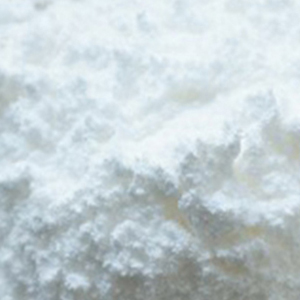
Ph Eur --- C20H14O4 --- 318.3 --- 77-09-8
DEFINITION
Phenolphthalein contains not less than 98.0 per cent and not more than the equivalent of 101.0 per cent of 3,3-bis(4-hydroxyphenyl)isobenzofuran-1(3H)-one, calculated with reference to the dried substance.
CHARACTERS
A white or almost white powder, practically insoluble in water, soluble in alcohol. It melts at about 260C.
IDENTIFICATION
A. Dissolve 25.0 mg in alcohol and dilute to 100.0 ml with the same solvent (solution A). To 2.0 ml of solution A add 5.0 ml of 1 M hydrochloric acid and dilute to 50.0 ml with alcohol (solution A1). To 10.0 ml of solution A add 5.0 ml of 1 M hydrochloric acid and dilute to 50.0 ml with alcohol (solution A2). To 2.0 ml of solution A add 5.0 ml of 1 M sodium hydroxide and dilute to 50.0 ml with alcohol (solution B). Examined between 220 nm and 250 nm, solution A1 shows an absorption maximum at 229 nm. The specific absorbance at the maximum at 229 nm is 922 to 1018. Examined between 250 nm and 300 nm, solution A2 shows an absorption maximum at 276 nm. The specific absorbance at the maximum at 276 nm is 142 to 158. Examined between 230 nm and 270 nm, solution B shows an absorption maximum at 249 nm. The specific absorbance at the maximum at 249 nm is 744 to 822.
B. Dissolve about 10 mg in alcohol. Add 1 ml of dilute sodium hydroxide solution. The solution is red. Add 5 ml of dilute sulphuric acid. The colour disappears.
TESTS
Solution S: To 2.0 g add 40 ml of distilled water R and heat to boiling. Cool and filter.
Appearance of solution: Dissolve 0.20 g in 5 ml of alcohol. The solution is clear and not more intensely coloured than reference solution.
Acidity or alkalinity: To 10 ml of solution S add 0.15 ml of bromothymol blue solution. Add 0.05 ml of 0.01 M hydrochloric acid , the solution is yellow. Add 0.10 ml of 0.01 M sodium hydroxide, the solution is blue.
Related substances: Examine by thin-layer chromatography. To pass the test.
Chlorides: Dilute 10 ml of solution S to 15 ml with water. The solution complies with the limit test for chlorides (100 ppm).
Sulphates: 15 ml of solution S complies with the limit test for sulphates (200 ppm).
Heavy metals: Heat 3 g with 50 ml of dilute hydrochloric acid R on a water-bath for 5 min and filter. Evaporate the filtrate almost to dryness and dissolve the residue in 30 ml of water. 12 ml of this solution complies with limit test A for heavy metals (10 ppm). Prepare the standard using 10 ml of lead standard solution (1 ppm Pb).
Loss on drying: Not more than 0.5 per cent, determined on 1.000 g by drying in an oven at 105C.
Sulphated ash: Not more than 0.1 per cent, determined on 1.0 g.
ASSAY
Dissolve 0.100 g in 5 ml of dimethylformamide. Add 5 ml of sodium carbonate solution, 10 ml of sodium hydrogen carbonate solution, 35 ml of water and 50.0 ml of 0.05 M iodine. Add 10 ml of methylene chloride and 20 ml of dilute sulphuric acid. Titrate the excess of iodine with 0.1 M sodium thiosulphate, using 0.3 ml of starch solution added towards the end of the titration, as indicator. Carry out a blank titration.
1 ml of 0.05 M iodine is equivalent to 3.979 mg of C20H14O4.
STORAGE
Store protected from light.
3,3-Bis(4-hydroxyphenyl)-1(3H)-isobenzofuranone
3,3-Bis(p-hydroxyphenyl)phthalide
C20H1404:Formula Wt 318.33
CAS Number 77-09-8
REQUIREMENTS
Clarity of alcohol solution: Passes test
Visual transition interval: From pH 8.0 (colorless) to pH 10 (red)
TESTS
Clarity of Alcohol Solution. Dissolve 1.0 g in 100 mL of ethyl alcohol. Not more than a faint trace of turbidity or insoluble matter should remain. Reserve the solution for the test for visual transition interval.
Visual Transition Interval. Dissolve 1.0 g of potassium chloride in 100 mL of water. Adjust the pH of the solution to 8.0 with 0.01 N acid or base. Add 0.15 mL of the 1% solution reserved from the test for clarity of alcohol solution. The solution should be colorless. Titrate the solution with 0.01 N sodium hydroxide until the pH is 8.2 (using the pH meter). The solution should have a pale pink color. Continue the titration until the pH is 8.6 (using the pH meter). The solution should have a definite pink color. Not more than 0.20 mL of 0.01 N sodium hydroxide should be consumed. Each additional 0.20 mL of 0.01 N sodium hydroxide should increase the amount of red color, until at pH 10 the solution should be very red.